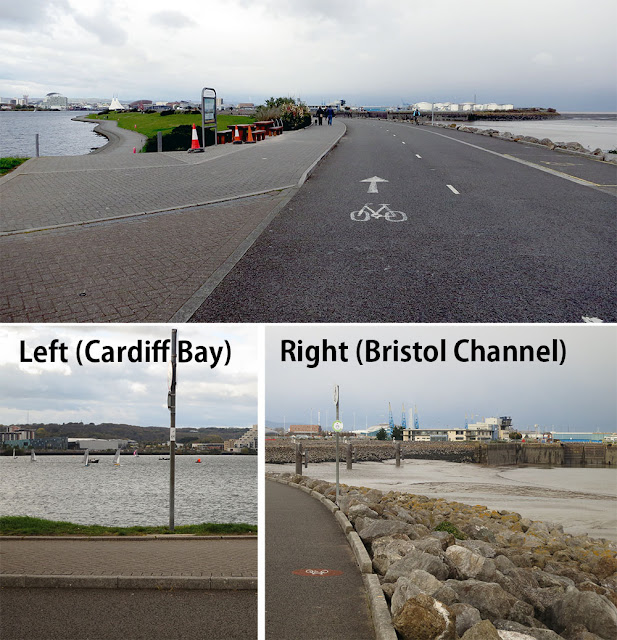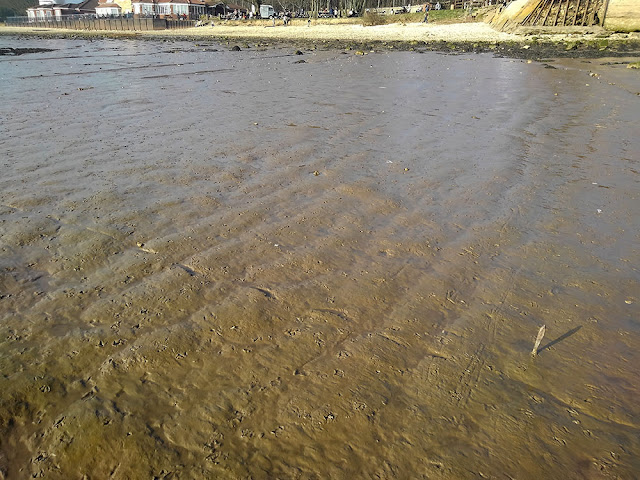Framborough (East Riding of Yorkshire) 7 July, 2018
I visited Framborough to observe chalk bed, till and coastal erosion.
 |
| Fig. 1. Locality of Framborough. |
Framborough is located on the headland in the eastern coast of Britain Island (Fig. 1).
The headland consists of the Cretaceous chalk beds (Fig. 2). We can observe the beds in the coastal cliff.
 |
| Fig. 2. Chalk bed with white color in Framborough. |
We can observe till deposited Quarternary over the chalk beds (Fig. 3). This is my first time to observe till and glacial deposits which is difficult to find in Japan because glacial didn't develop in Japan during glacial stages in Quarternary.
The till consists of gravel, sand and silt without structures (Fig. 4). The base, contact with chalk beds, are erosional surfaces which are undulated (Fig. 5).
 |
| Fig. 4. Close-up of till. |
 |
| Fig. 5. Contact between chalk bed and till. |
In Japanese case, fluvial or shallow marine deposits with tephra are distributed on surfaces of many coastal areas. From the sedimentary environment and the depositional ages using tephra and the altitude, we can reconstruct tectonic, paleo sea-level and geological histories of the area. The activities of some active faults in Japan which can occur earthquakes in near future are estimated based on this method. I am also using it in Japan but I feel that it is difficult to apply the method to the Quarternary which consists of glacial deposits in UK because
the method requires the altitude of paleo plain-surfaces or deposits
which were formed under strong influence by sea level, for example beach or tidal flat, as indicators of paleo
sea-level. The difference of the altitudes of basal erosional surfaces, by river or wave, of other glacial stages is also useful to reconstruct tectonic history but erosional surfaces of glacial seems to be independent from sea level.
In addition to this, we have to consider about post-glacial rebound occurred in UK (Western Europe and North America, birthplace of and pivotal areas for geology) to reconstruct the tectonics.










































